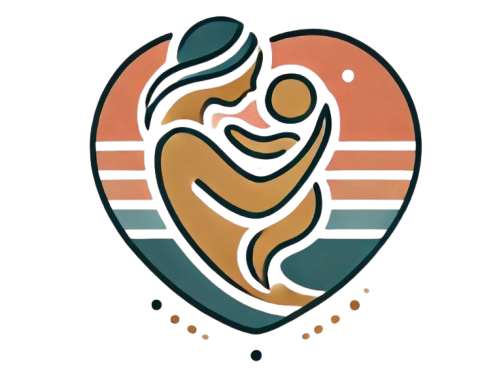Recovering Your Strength: Pelvic Floor Exercises After Birth

Childbirth is a profound experience that brings joy and new beginnings, but it can also leave new mothers grappling with the physical changes that accompany it. Among the most significant of these changes is the impact on the pelvic floor—a group of muscles that play a crucial role in supporting pelvic organs, bladder control, and overall core stability. This is where pelvic floor exercises after birth come into play as a vital part of postpartum recovery.
In today’s fast-paced world, the importance of postpartum care cannot be overstated. Many women experience weakened pelvic muscles after childbirth, which can lead to discomfort, incontinence, and a delay in returning to normal activities. By focusing on pelvic floor exercises, new mothers can strengthen their pelvic muscles, enhance their postnatal exercise routine, and promote overall pelvic health. This topic is especially relevant now, as awareness of postpartum health continues to grow.
This article will guide you through understanding the significance of pelvic floor exercises after birth, exploring best practices for healing after a C-Section, and how to effectively incorporate these exercises into your daily routine. By the end, you’ll be equipped with actionable insights to aid in your postpartum recovery journey.
Understanding the Importance of Pelvic Floor Exercises
The pelvic floor consists of layers of muscles and tissues that stretch like a supportive hammock from the tailbone to the pubic bone. During pregnancy, these muscles are put under significant stress, and childbirth can further strain or damage them. This weakening can lead to issues such as urinary incontinence and pelvic organ prolapse.
Pelvic floor exercises, commonly known as Kegel exercises, are designed to strengthen these muscles, ultimately improving bladder control and reducing the risk of prolapse. According to a study published in the Journal of Women’s Health Physical Therapy, women who performed regular pelvic floor exercises reported a 62% improvement in urinary incontinence symptoms.
Incorporating these exercises into a postnatal exercise routine is essential for recovering pelvic strength. The key is to start gently and gradually increase intensity as your body heals. Real-world examples show that mothers who begin these exercises soon after birth often recover faster and experience fewer complications.
Best Practices for Healing After a C-Section
For mothers who have undergone a C-section, the recovery process can be different but equally demanding. A C-section is major abdominal surgery, and it requires a careful approach to postpartum exercises. The best practices for healing after a C-section include starting with light activities such as walking before introducing pelvic floor exercises.
Research indicates that pelvic floor exercises can be safely initiated a few weeks post-surgery, but it’s crucial to consult with a healthcare provider. A gentle approach can help in reducing recovery time and improving overall postpartum pelvic health. Real-life testimonials highlight that women who followed their doctor’s guidelines and incorporated pelvic exercises felt more in control of their recovery process.
Moreover, focusing on the breath and core engagement during these exercises can aid in healing the incision site and improving abdominal strength. The journey to recovery is unique for each individual, and understanding your body’s signals is vital in this process.
Creating an Effective Postnatal Exercise Routine
Designing a personalized postnatal exercise routine involves more than just focusing on the pelvic floor. A holistic approach that includes low-impact cardio, gentle strength training, and flexibility exercises can enhance overall recovery. Integrating pelvic floor exercises into this routine ensures a balanced approach to strengthening the body post-birth.
For instance, a simple routine might start with a warm-up of gentle stretching followed by 5 minutes of Kegel exercises. Gradually, you can introduce activities such as pilates or yoga, which are known for improving core stability and pelvic strength. Data from fitness experts suggest that women who maintain a consistent routine see improvements in their physical and mental health.
It’s important to listen to your body and adjust the intensity and type of exercises accordingly. The goal is to build strength gradually without overexerting yourself. This balanced approach to postpartum recovery can lead to a healthier, more confident you.
Overcoming Challenges and Staying Motivated
While the benefits of pelvic floor exercises are clear, staying motivated and overcoming challenges can be difficult. Common barriers include time constraints, lack of guidance, and physical discomfort. However, setting realistic goals and tracking progress can go a long way in maintaining motivation.
For example, using a journal to note improvements in strength and a reduction in symptoms can provide encouragement. Additionally, joining a community of new mothers or seeking the support of a physiotherapist can offer guidance and accountability. A study in the International Journal of Behavioral Nutrition and Physical Activity found that social support significantly increases adherence to postpartum exercise programs.
Remember, the journey to postpartum recovery is not a race. Celebrate small victories and remain patient with your progress. With consistent effort and determination, overcoming these challenges is entirely possible.
To further assist in your journey, consider exploring complementary video content that demonstrates effective pelvic floor exercises. These visual guides can offer clarity and enhance your understanding of proper form and technique.

Frequently Asked Questions
What are pelvic floor exercises?
Pelvic floor exercises, or Kegel exercises, are movements designed to strengthen the pelvic muscles. By regularly contracting and relaxing these muscles, you can improve bladder control and reduce the risk of pelvic organ prolapse. For example, imagine trying to stop the flow of urine mid-stream; this action engages your pelvic floor.
When can I start pelvic floor exercises after giving birth?
Most healthcare providers recommend starting pelvic floor exercises as soon as you feel comfortable after childbirth, barring any complications. Typically, new mothers can begin within a few days post-delivery, but always consult your doctor, especially after a C-section, to tailor the timing to your specific recovery needs.
How often should I perform pelvic floor exercises?
For optimal results, aim to perform pelvic floor exercises daily. A common recommendation is three sets of 10 repetitions, several times a day. Consistency is key, and incorporating these exercises into your daily routine can yield noticeable improvements in pelvic strength and control over time.
Can pelvic floor exercises help with postpartum back pain?
Yes, pelvic floor exercises can help alleviate postpartum back pain by improving core stability and muscle balance. Strengthening the pelvic muscles supports the spine and can lead to reduced discomfort. Combining these exercises with a comprehensive postnatal routine can enhance overall recovery and pain management.
Are pelvic floor exercises beneficial after a C-section?
Absolutely. Although the approach may differ slightly, pelvic floor exercises remain beneficial after a C-section. They aid in restoring pelvic strength, improving bladder control, and enhancing recovery. Always follow medical advice to ensure exercises are safe for your specific post-surgery condition.
Conclusion
In summary, pelvic floor exercises after birth are an essential component of postpartum recovery. By understanding their importance, following best practices, and incorporating them into a balanced postnatal exercise routine, you can effectively strengthen your pelvic muscles and improve your overall health.
As you navigate your postpartum journey, remember that recovery takes time and patience. Focus on gradual progress and seek professional guidance when needed. Embrace the process, celebrate your achievements, and stay committed to your health and well-being.
For further reading, consider exploring topics such as “Postpartum Nutrition for Optimal Recovery,” “Effective Core Strengthening Exercises for New Mothers,” and “The Role of Yoga in Postnatal Recovery.” These resources can provide additional insights and strategies to support your postpartum journey.




